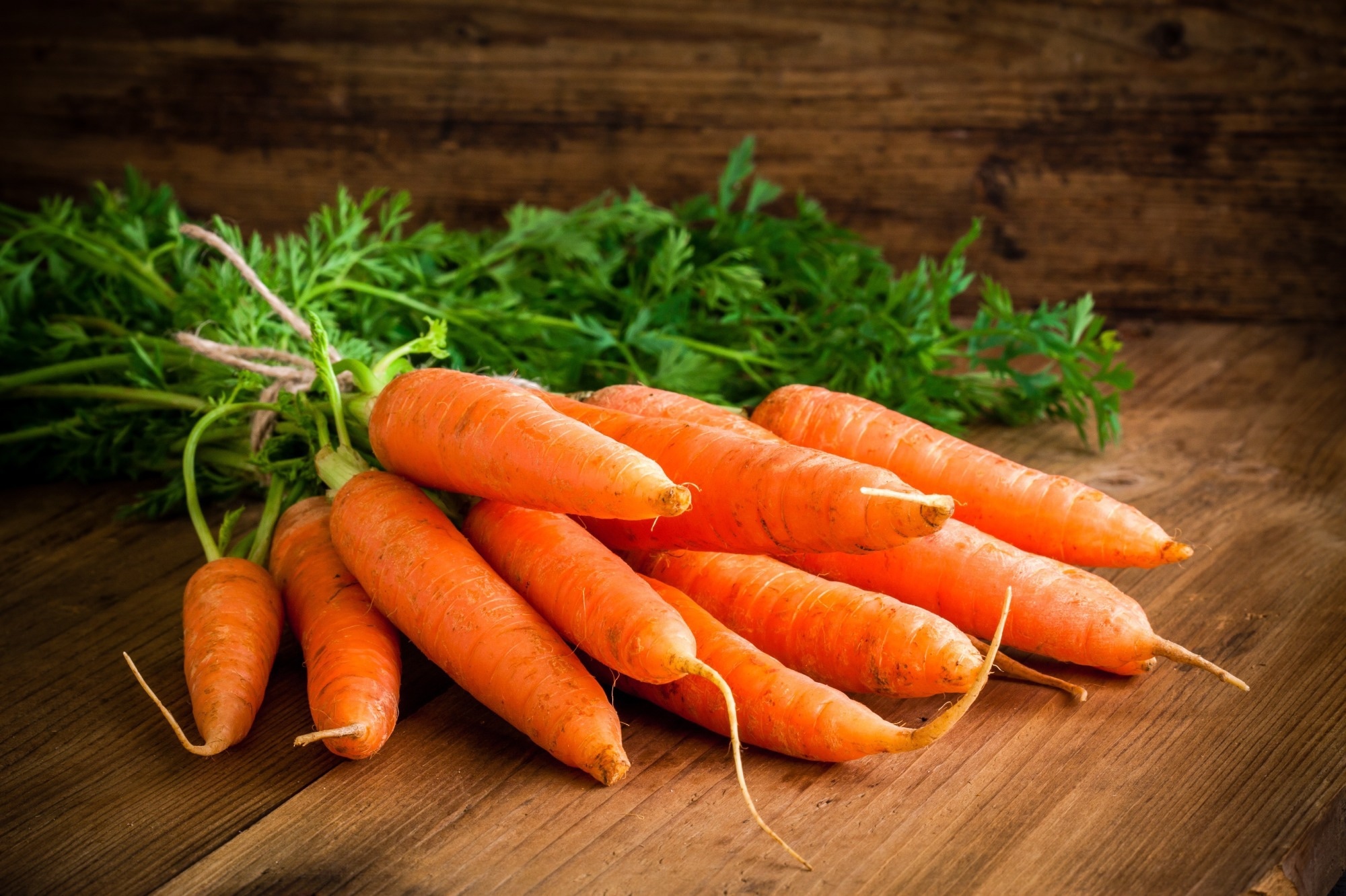
Transgenic carrots producing nisin protein show promise as natural food preservatives
A recent Scientific Reports study investigates the antibacterial effect of nisin protein expressed in carrots.
 Study: Evaluation of antibacterial properties of nisin peptide expressed in carrots. Image Credit: nblx / shutterstock.com
Study: Evaluation of antibacterial properties of nisin peptide expressed in carrots. Image Credit: nblx / shutterstock.com
Background
Food spoilage occurs due to microbial contamination, during which these food products undergo changes in their nutritional value, taste, texture, and color because of the synthesis of multiple enzymes and chemicals by the microorganisms. Therefore, unwanted microbial growth in food negatively affects human health and the national economy.
Typically, to delay or prevent food spoilage, preservatives are added. A preservative can be synthetic or natural substances added to food and medicinal products to prevent microbial growth during storage.
Some common preservatives used in the food industry include nitrites, sorbates, benzoates, and sulfites. Importantly, previous studies have shown that certain chemical preservatives, such as nitrites and sulfur dioxide, have harmful effects on humans. Thus, it is imperative to understand the side effects of chemical additives.
Most chemical preservatives damage the liver, as these chemicals put pressure on the liver for their removal from the body. In contrast, natural or “green” preservatives derived from microbial, animal, or plant sources have limited side effects.
Many bacteria, including lactic acid bacteria, produce peptides that have antimicrobial properties. Nisin is one of the best lantibiotics produced by several Lactococcus lactis strains and is used in many countries as a food preservative.
Genes encoding antimicrobial peptides have been introduced to plants, leading to superior resistance to microbial pathogens. Although antimicrobial genes, such as cecropin B, have been introduced to rice in the past, nisin protein has not yet been incorporated in plants.
About the study
The current study investigated the production of nisin protein in transgenic carrot plants. The carrot plant was selected in this study because it is directly used in various prepared foods. This study hypothesized that nisin expressed in the transgenic carrot plant could serve as a food preservative and positively reduce the application of harmful artificial preservatives in food products.
The nisin gene sequence of Lactococcus lactis was obtained from the National Center for Biotechnology Information (NCBI) website. The activity of the gene for optimal production of nisin was assessed.
Moreover, the nisin gene was cloned into the plasmid pBI121 between the BamHI and SacI restriction sites. A KDEL signal sequence was also added at the end of the gene.
For amplification, recombinant pBI121 was transformed into the E. coli (Dh5α) strain. Subsequently, the plasmid was transfected into Agrobacterium for transformation to the plant. Carrot explants were immersed into the inoculum fluid containing the Agrobacterium containing the nisin gene, and ultimately, a transgenic carrot plant was produced.
To optimize gene transformation into the carrot plant, the concentration of inoculum containing Agrobacterium, cefotaxime, and kanamycin antibiotics was optimized. This is an extremely important step because non-transgenic plants may grow at a less than optimal concentration.
Reverse transcription polymerase chain reaction (RT-PCR) assay was performed, along with other assays, to confirm the successful incorporation of the nisin gene through Agrobacterium into the carrot plant.
Study findings
RT-PCR confirmed the expression of the nisin gene in the transgenic carrot plant and was further validated through DNA dot blot and enzyme-linked immunosorbent assay (ELISA). The leaf protein was extracted from transgenic and non-transgenic plants to assess the antibacterial properties of nisin.
The Agar Overlay assay was used to determine the antibacterial properties of nisin. To this end, nisin was able to inhibit gram-positive bacteria Staphylococcus aureus and gram-negative bacterium Escherichia coli. Notably, in the control or non-transgenic plant, antibacterial inhibition was not observed.
Consistent with previous reports, the current study indicated that an increase in the concentration of extract enhances antibacterial activity. The stability of the nisin protein extracted from the transgenic carrot plant was assessed, along with its antibacterial activity in peach and orange juice.
In these experiments, nisin was found to control bacterial growth up to 106 colony-forming units (CFU)/ml. This finding implies that nisin protein extracted from transgenic carrot leaf could remain stable in juices and control bacterial growth, thus suggesting that nisin can potentially be used as a natural preservative for fruit juices.
The genetic stability of the transgenic carrot plants was evaluated. In this context, inter simple sequence repeat (ISSR) primers were used, which indicated a high genetic stability between the mother plant and the plant regenerated by somatic embryogenesis in the carrot plant.
Conclusions
The current study provides evidence demonstrating the potential of nisin protein as a natural preservative in food. The experimental findings indicate that this recombinant protein can effectively inhibit microbial pathogens in juices without altering the taste or color.
- Ziarani, M. F., Tohidfar, M., & Mirjalili, M. H. (2023) Evaluation of antibacterial properties of nisin peptide expressed in carrots. Scientific Reports 13(1); 1-20. doi:10.1038/s41598-023-49466-7
Posted in: Medical Science News | Medical Research News
Tags: Assay, Bacteria, Biotechnology, Carrot, Cefotaxime, Chemicals, Contamination, DNA, E. coli, ELISA, Embryogenesis, Enzyme, Food, Fruit, Gene, Genes, Genetic, Kanamycin, Liver, Peptides, Plasmid, Polymerase, Polymerase Chain Reaction, Protein, Staphylococcus aureus, Sulfur, Transcription, Transgenic

Written by
Dr. Priyom Bose
Priyom holds a Ph.D. in Plant Biology and Biotechnology from the University of Madras, India. She is an active researcher and an experienced science writer. Priyom has also co-authored several original research articles that have been published in reputed peer-reviewed journals. She is also an avid reader and an amateur photographer.